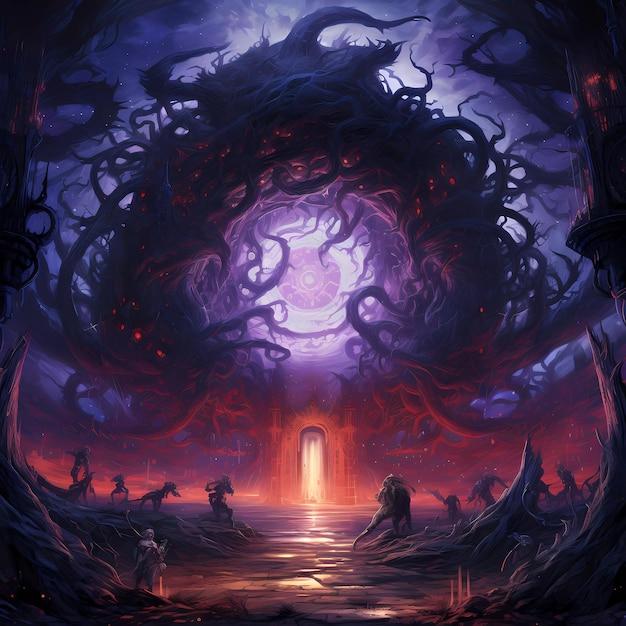Fables have been a part of storytelling since ancient times, captivating both young and old with their engaging narratives and moral lessons. These enchanting tales often feature talking animals or mythical creatures and provide valuable insights into human behavior and the consequences of our actions. In this blog post, we will delve into the world of fables and explore their essential elements.
From Aesop’s famous fables to modern-day adaptations, these timeless stories typically follow a specific structure. They are characterized by a concise and focused narrative, often revolving around animals that personify certain human traits or emotions. The central plot of the fable revolves around a moral lesson, which is neatly summed up at the end. This moral, a guiding principle or lesson, allows readers to reflect on their own behavior and learn from the characters’ experiences.
Throughout this article, we will not only examine the elements that make up a fable but also discuss the purposes they serve, both in terms of entertainment and education. So, let’s embark on a journey through fables, uncovering their magical ingredients and the wisdom they impart to readers of all ages.

What are the Elements of Fables
Have you ever heard a fable and thought, “Hmm, there’s something captivating about this tale!” Well, my friend, that’s because fables are packed with elements that make them both entertaining and informative. So, let’s dive into the enchanting world of fables and explore their key elements!
Characters Straight Out of an Animal Kingdom Anthology
One of the most distinctive features of fables is their anthropomorphic characters. These charming tales often feature animals as the main protagonists, who possess human-like qualities and abilities. From wise old owls to cunning foxes, fables introduce us to a colorful cast of characters straight out of an animal kingdom anthology. By embodying human traits, these characters help convey moral lessons in an accessible and relatable way, all while tickling our imaginations.
A Moral Worth More Than a Pot of Gold
At the heart of every fable lies a valuable moral lesson. Whether it’s about the importance of honesty, the perils of greed, or the rewards of perseverance, fables use allegorical storytelling to impart wisdom. Just like Aesop’s timeless fables, these tales often end with a moral punchline that leaves us pondering and reflecting on our own lives and actions. So, get ready to have your moral compass recalibrated and your heart stirred by the profound lessons hiding within these delightful narratives.
Plot Twists That Surprise and Delight
Just because fables are loaded with lessons doesn’t mean they’re predictable or dull. In fact, they often throw unexpected twists and turns our way, keeping us on the edge of our seats. Want an example? Think about “The Tortoise and the Hare.” Who could have predicted that slow and steady would defeat fast and reckless? Fables excel at turning conventional wisdom on its head, leaving us both surprised and delighted by the clever and often humorous plot developments.
A Dash of Humor to Keep the Fun Alive
Who said life lessons can’t be fun? Fables understand the importance of keeping their audiences entertained. Through witty dialogue, humorous situations, and playful storytelling, fables inject laughter into their narratives without compromising their moral integrity. So, brace yourself for some good chuckles as you embark on a delightful journey through these whimsical tales.
Timeless Charm and Universal Appeal
Despite their ancient origins, fables have a timeless charm that continues to captivate audiences of all ages. From generation to generation, these tales have been shared and cherished, standing the test of time. Their universal appeal lies in their ability to resonate with our shared human experience, transcending cultural boundaries and language barriers. So, whether you’re a child giggling at the antics of talking animals or an adult reflecting on the deeper layers of meaning, fables have something for everyone.
A Final Word on Fable Elements
In summary, fables encompass an array of delightful elements: anthropomorphic characters, valuable moral lessons, surprising plot twists, humorous storytelling, timeless charm, and universal appeal. So, the next time you come across a fable, take a moment to appreciate the artistry and wisdom woven within its seemingly simple narrative. After all, fables are not just stories – they are treasures of human imagination and understanding that have been passed down for centuries, bringing joy, inspiration, and enlightenment to all who embrace them.

FAQ: Elements of Fables
What are the purposes of fables
Fables serve multiple purposes, my friend! Firstly, they entertain us with their intriguing characters and captivating stories. Who doesn’t love a good animal protagonist teaching us valuable lessons? Secondly, they educate us by conveying moral messages in a playful manner. These tales have been passed down through generations, helping us to understand the complexities of life and instilling important values and virtues within us.
What is an activity list
Ah, the activity list! It’s like a to-do list but with more pizzazz. It’s a handy compilation of tasks that need to be accomplished in a specific project or endeavor. Whether it’s planning a party or embarking on an adventure, an activity list keeps us organized and ensures we don’t inadvertently forget the important stuff. Plus, checking off completed tasks gives us a satisfying sense of accomplishment.
How do you describe a sequence of events
Describing a sequence of events is like narrating a story, my friend. You want to take your readers on a journey, step by step. Start by setting the stage, introducing the key players, and then dive into the main action. Don’t forget to sprinkle some suspense, drama, or humor along the way to keep your readers hooked. And, of course, wrap it up with a satisfying conclusion that ties everything together nicely.
What is the sequence of events in a story called
Ah, the sequence of events in a story is often referred to as the plot. It’s the carefully crafted thread that weaves through the story, connecting all the events in a logical and meaningful way. Just like a rollercoaster ride, the plot takes us on twists and turns, keeping us on the edge of our seats until the very end. So buckle up, my friend, and enjoy the exhilarating ride!
What activities should be present in a project plan
A good project plan leaves no stone unturned, my friend! It should include a myriad of essential activities such as defining project goals, creating a timeline, allocating resources, setting milestones, tracking progress, conducting regular evaluations, and communicating with stakeholders. Think of it as a well-choreographed dance with each activity playing its part to ensure the success of the overall project.
What is critical sequence
Ah, the critical sequence. It’s like the heartbeat of a project, my friend. This refers to the specific order in which tasks must be completed to prevent any delays or bottlenecks in the project timeline. Just like dominoes, each task in the critical sequence depends on the successful completion of the one before it. So, it’s crucial to identify and prioritize these critical tasks to keep the project flowing smoothly.
How do you explain fable to a child
Explaining fables to children can be a delightful adventure, my friend! Start by telling them that fables are enchanting stories featuring talking animals or other fantastical characters. These stories entertain us while teaching important life lessons. Emphasize that fables are like secret codes that unlock valuable knowledge about how to be a good person and make wise choices. Let their imagination soar as they dive into the magical world of fables!
What is the moral of the little girl
Ah, the little girl’s moral! In this heartwarming tale, the moral is all about embracing one’s uniqueness. The little girl, despite having a prosthetic leg, learns that her differences don’t define her. Instead, she discovers the power of self-acceptance and inner strength. The moral reminds us all that true beauty shines from within, and our differences are what make us truly special.
What does sequence mean
Sequence is like putting puzzle pieces together, my friend. It refers to the order or arrangement of things in a particular pattern or progression. Just like a recipe, you need to follow the steps in the right sequence to create a delicious dish. In storytelling, sequence ensures that events unfold logically and coherently, building suspense, climaxing, and reaching a satisfying resolution. So, let the sequence guide your journey through the fables’ magical world!
What are the elements of fables
Let’s explore the wonderful elements that make up fables, my friend! First, we have the animal or fantastical characters, each representing different traits and personalities. These characters often embark on exciting adventures and find themselves in challenging situations. Then we have a moral lesson cleverly hidden within the story, aiming to teach us about life, values, or the consequences of our actions. Finally, fables possess an enchanting setting where animals talk, forests whisper secrets, and magic comes alive. So, open your heart and let these elements transport you to a world brimming with wisdom and wonder!
